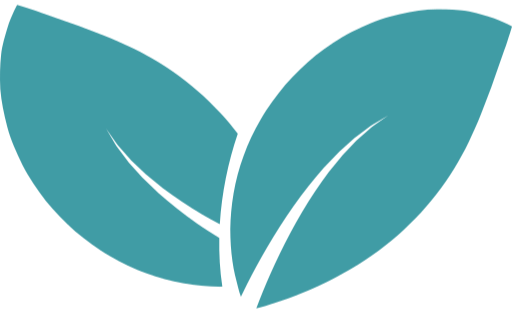Burnout is Burnout Is Not Just Intense Fatigue!
- Katerina Kotsi

- Apr 10
- 4 min read
Updated: Oct 6
Burnout isn’t simply the feeling of accumulated and intense fatigue after a tough week. It’s a much deeper condition that affects the brain and the body on multiple levels, according to neuroscience.
How is it connected to our perception of productivity, which is one of the hottest topics of our time, often discussed in many different ways?
What Is Burnout, Really?
The World Health Organization recognizes burnout as an occupational phenomenon, with three core features:
◇ Exhaustion ➛ more than just feeling tired, it’s a profound energy depletion that affects the mind, emotions, and body—and it doesn’t go away with just a good night’s sleep!
◇ Cynicism/Detachment ➛ we begin to feel disconnected from our work and may develop negative or cynical attitudes toward tasks we once found meaningful.
◇ Reduced Efficacy ➛ our ability to focus, make decisions, and complete tasks declines, even when we’re trying our hardest.
In Greek language, we often refer to burnout as Professional Exhaustion.
Why Does Our Perception of Productivity Lead to Burnout?
⚠️ Many of us operate under the false belief that the more hours we work, the more we achieve—but cognitive science says otherwise!
The human brain is designed to work in cycles, not non-stop. Neuroscience research shows that after 90–120 minutes of focused work, our attention begins to drop and we need a period of recovery. Ignoring these natural rhythms and pushing through leads to a dramatic drop in performance.
True productivity comes from strategic work, not just more work. This means:
✔ Focusing on the most important tasks that add real value.
✔ Scheduling work according to your natural energy rhythms (e.g., doing deep work when you’re most focused).
✔ Taking regular breaks so the brain can refresh and consolidate information.
How to Recognize Burnout Before It Becomes Serious
Burnout often builds gradually. The body and mind try to alert us long before we reach full exhaustion. Learn to spot the early warning signs:
🔴 Physical signs: persistent headaches, disrupted sleep, digestive issues, frequent illness.
🔴 Emotional signs: increased irritability, anxiety, feeling overwhelmed by tasks that were once manageable.
🔴 Cognitive signs: trouble concentrating, more mistakes, forgotten appointments or details.
🔴 Behavioral signs: withdrawing from colleagues, increased procrastination, using food/alcohol/screens to numb emotions.
The earlier we recognize these signs, the easier it is to reverse the path toward burnout.
The P.I.E. Method ➛ A Practical Approach to Preventing Burnout
Dr. Ana Melikian’s P.I.E. Method is a simple daily tool for managing stress and preventing burnout:
🟢 Pause ➛ create a moment of space between a stress trigger and your response - e.g., take 60 seconds to breathe before replying to a stressful email. This pause activates the prefrontal cortex (the rational brain), preventing the emotional brain (amygdala) from taking over.
🟢 Increase Awareness ➛ observe how stress manifests in your body and mind - e.g., tension in the shoulders, racing heart, shallow breathing. Recognizing these signs allows us to act before stress spirals out of control.
🟢 Experiment ➛ instead of viewing challenges as threats, treat them as puzzles or opportunities for growth - e.g., ask yourself: “What can I learn from this situation?” or “Is there another way to approach it?” This mindset shift (growth mindset) reduces stress and opens new possibilities.
The Importance of Breaks and Personal Interests
Engaging in personal interests is not a luxury - it’s a necessity! Hobbies and free time help restore mental energy, boost creativity, and improve work-life balance. Even a short walk or a few moments of quiet can restore focus and concentration.
Breathwork: Regulating Stress at a Neurological Level
Chronic stress keeps the nervous system in a constant state of alert. Controlled breathing helps restore calm, lower cortisol levels, and build resilience against stress. Even just a few deep breaths during the day can make a big difference.
Burnout Is Not Just an Individual Problem
While personal habits matter, workplace culture is often a critical factor in the emergence of burnout. Excessive workloads, lack of autonomy, and misaligned values create environments where stress becomes chronic.
Organizations must prioritize employee well-being by setting realistic expectations, offering flexibility, and nurturing a culture that values recovery just as much as productivity.
However, burnout prevention is not just about personal self-care—it also requires systemic change.
Building a Sustainable Approach to Work
Long-term success depends on our ability to maintain energy and motivation. Rest and recovery are essential - just like top athletes need downtime to perform at their best, professionals need time to recharge.
Burnout is not a sign of dedication - it’s a signal for change. Recognizing early warning signs allows for timely intervention before burnout escalates. Seeking support - through guidance, coaching, or therapy - is not a weakness but a strategic step toward resilience.
Shifting the focus from constant output to sustainable success ensures a more balanced and fulfilling professional life!

Through our holistic approach and years of experience, we help individuals and organizations design and implement the changes they need and desire - always aiming for sustainable growth and well-being. Developing meaningful skills and strategies is a core part of this process.
Contact us today and begin your own growth journey!




Comments